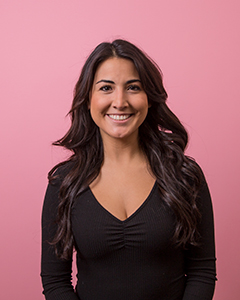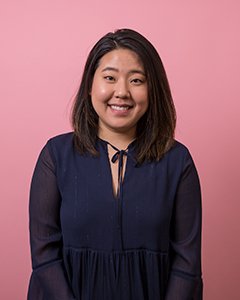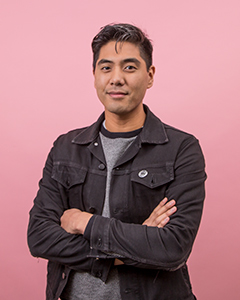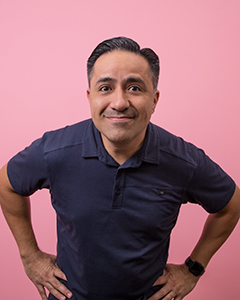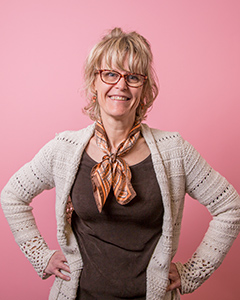The ecd must motivate, inspire, manage, create and steward new technology
By Kyle O’Brien from Adweek
Just being creative isn’t enough to rise to the role of agency executive creative director. A good ecd must have the right combination of creative inspiration and know-how along with solid management and strategy skills to be able to balance the job of agency creative direction—making sure their creative teams execute directives, fits the voice and style of the brand and brief.
The ecd is a role that means assorted things to different agencies. At one shop, it could be the lead creative just under the chief creative officer, in charge of the day-to-day operations for the creative team. At another agency, the ecd could be in charge of the entire creative direction for the company, serving as a CCO.
Regardless of how much an executive creative director is in charge of at a particular agency, that person must have both solid creative creds and well as astute managerial expertise.
Being an ecd is more than just mastering the creative process and outcome, Ida Gronblom, ecd at FCB New York, told Adweek. “It’s also a career spent absorbing strategic thinking, client management, production values, project leadership, recruitment and company culture building—once at the ecd level, you play your whole hand.”
With new technologies changing the way creative gets done, including AIgenerated visuals and copy, the ecd must be adept at adopting new ways of working while communicating those changes to the creative team. Add in tasks like setting deadlines and goals, conceptualizing plans, working within budgets and monitoring the progress of projects and campaigns. The modern executive creative director must be nimble and a constant multitasker.
The modern-day executive creative director
The role is defined differently at each agency. At some agencies, it’s a very experienced creative director in charge of one brand and a handful of people. At others, they’re the leader of the entire agency. There are also group ecds and global ecds, so the role is all over the place, which ranges from the size of the agency, being part of a network or indie shop or just how the agency deals with titles.
“At FCB, it’s a very clear role. You lead a chunk of the agency and closely partner with the CCO and the leadership team. You’re not siloed. You’re embedded into the vision of the agency,” said Gronblom.
A good ecd is a steward for creative culture and an inclusive, highperformance environment, states Pepe Aguilar, ecd at Gallegos United. “The ecd sets the bar for the overall creative quality, and just as important, the environment that nurtures the creative collaboration that pushes individuals and teams to deliver their best work,” said Aguilar.
How has the role of the ECD changed?
While the tools have changed to do the job, the core responsibilities of the ecd remain the same, according to Maria D’Amato, ecd at GSD&M.
“Ensure the work of the agency is the best it can possibly be and lives up to a higher vision of what the agency offers; hire and retain the best talent; create systems and structures that facilitate those first two; bring in new business; all while developing and maintaining relationships with peers on the client side,” D’Amato told Adweek.
Being flexible and curious is more important than ever, said Forsman &
Bodenfors NY head of creative, Emma Eriksson, who serves as an ecd.
“Some of our clients have top creative talent internally, and that person also becomes a partner to me and informs new ways of working for us. The speedy development of new channels and technology makes me spend more time learning and staying on top of trends. It never becomes boring,” said Eriksson, who added that ecds must keep fine-tuning the work and not let go until the work is at its best.
Kai Hasson, co-founder and ecd at branded content agency Portal A, said that his agency is seeing a more multichannel approach to creativity.
“When I started, we were mainly focused on campaigns that played out on a single platform. Now, I’m finding that my job is to shepherd through highly strategic campaigns with storylines that live across platforms,” said Hasson.
Leadership and partnership
Unlike the CCO, the ECD is a more hands-on role, usually. Most ecds interviewed mentioned that they like to remain in the mix and do some of the creative work rather than just be a figurehead.
It’s a role that is both managerial and in the trenches, which makes being hands-on a bit more of a challenge.
“It’s endless spinning plates, and it is one that wobbles a bit more … they don’t all have to be spinning perfectly, and I trust my team’s got it,” said Hamish Campbell, ecd at design and branding agency Pearlfisher.
Chris Buhrman, ecd at Milwaukee independent agency Hanson Dodge, said that the role has to be one layer out of the thick of the work to remain objective. Since Buhrman came up through the “trenches,” as he rose to executive creative director. He said he had to push himself back and let the teams do the work so that he could help them get better.
To help his team find the best work, Buhrman said he had to “be objective enough to say ‘I’m sorry, guys, that is not as good as that.’ Being just a little bit out of the mix, you can really be the referee as well as sort of the coach.”
Buhrman’s role is a bit more managerial since he doesn’t have a CCO above him at the smaller agency. But for those who do, they see their ties to the CCO as a partnership all the way through the creative process.
“First and foremost, an ecd helps drive the CCO’s creative vision for the agency forward,” said Laragh Gallagher, ecd at The Marketing Arm, adding that “strong alignment in leadership is critical to success.”
Collaboration is key across the entire creative team, and each ecd must be there to support and lead the creative team.
“We are helping them to improve their work all the time and to come up with new ideas, new ways,” said Paulo Junger, ecd at DDB, adding that the CCO helps to elevate the ideas to the next level.
Finding the best for the job
Michael Aimette, CCO at FCB New York, said that the ecd is perhaps the most difficult job in the creative department because it’s the one where the person must be both a maker and a manager. When it comes to finding great ecds, he looks for polymaths.
“No ecd checks absolutely every box. Neither does any CCO for that matter. They don’t have to be the best at every single thing, but hopefully really nail two or three high-level aspects of the job—whether being a great writer/art director/designer, a great communicator, an agency cultural leader, a great strategic thinker. Then we work together to help bolster those other aspects that need bolstering,” Aimette told Adweek.
Having several different ecds in the agency is a blessing, said Aimette, because each has their individual expertise and insights into the agency and the clients they work with.
“I tend to treat each of the ecds as my temporary partner—I just get to bop into their world for a while and try to help them out, listen to their unique challenges and support them in any way. As I’ve only been a CCO for a little over three years, I’m still learning how to get out of the way and stop acting like an ecd myself because, let’s face it, nobody benefits from that,” said Aimette.
New trends, technology and the rise of AI
Technology brings changes in the way creatives work, and the ecd must stay on top of the trends. Lately, the tech chatter is all about AI for art generation and copy, like OpenAI and ChatGPT.
Not every creative loves the constant changes technology brings, but all good ecds understand that embracing tech is necessary to move creative forward. It just has to be done responsibly and with intent to enhance the creative idea.
The rise of AI is changing how creative departments are built, and how input is given to an AI tool determines the creative output, so learning how best to deliver input will definitely change what the industry values in copywriters, art directors and others who are part of the creative process.
“The most disruptive thing in our industry right now is the need to understand and master the use of AI. But the most important thing continues to be the need for brands with an authentic purpose to create long-lasting relationships with their consumers,” said Aguilar.
Hasson added that he enjoys framing AI as a “prosthesis for creativity” and believes it can be a useful tool for many creative tasks.
Data, digital capabilities and AI have created an open space where creatives can craft a message that is more targeted to a specific audience than ever before, said Gallagher, while Junger sees new technologies as tools to enhance creativity. And it’s creativity that ultimately gets a creative promoted in the agency world, and Gallagher offered some advice to those seeking the role.
“To get from good to great, a modern ecd needs to foster a fearless creative culture, bring proactive work to our brands, and keep a pulse on the industry so we can anticipate shifts in the marketplace before they happen,” said Gallagher.
Eriksson added that as the industry and technology evolve, “people will always be the heart and soul behind the work, no matter how good AI gets,” she said.
